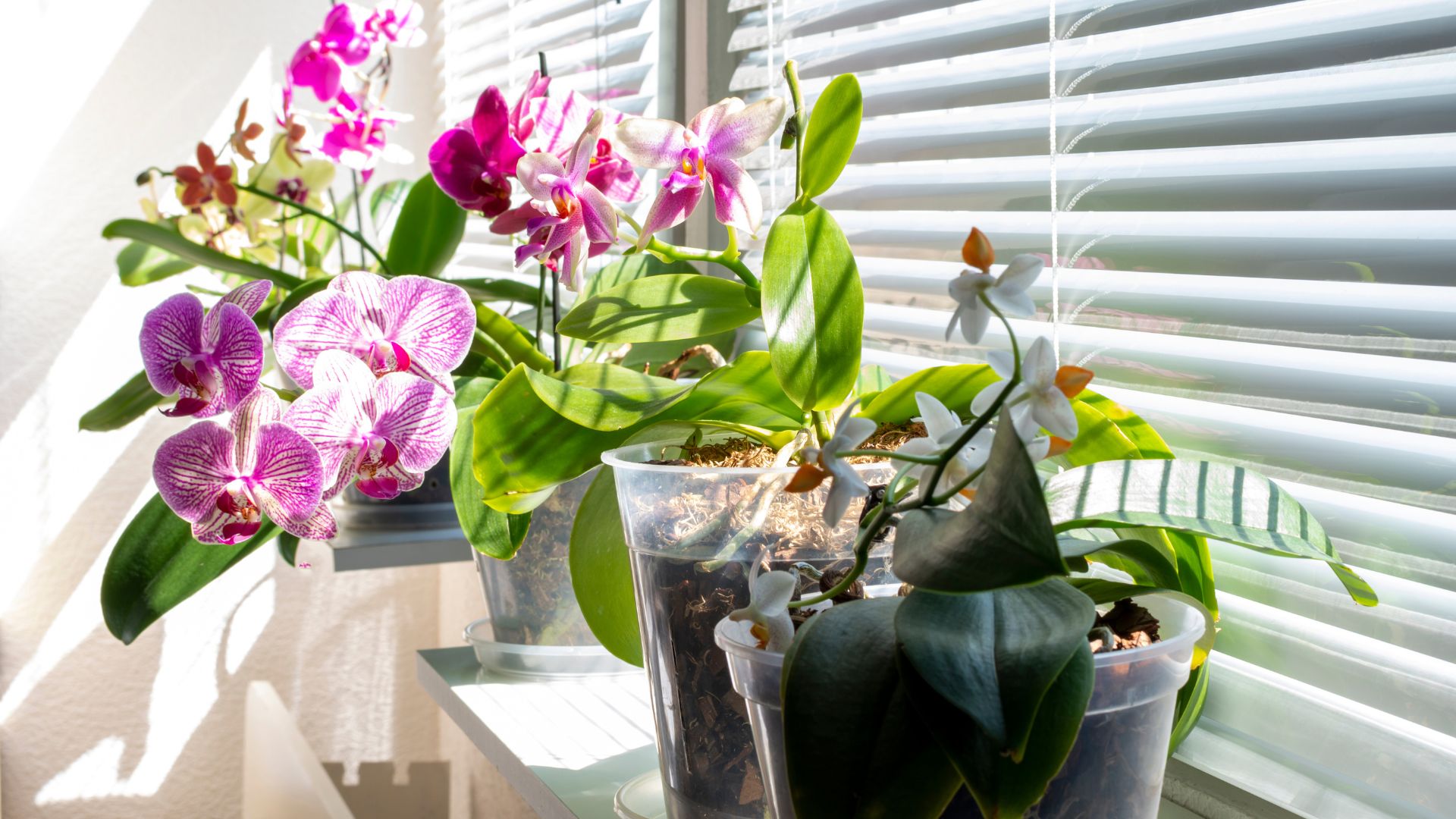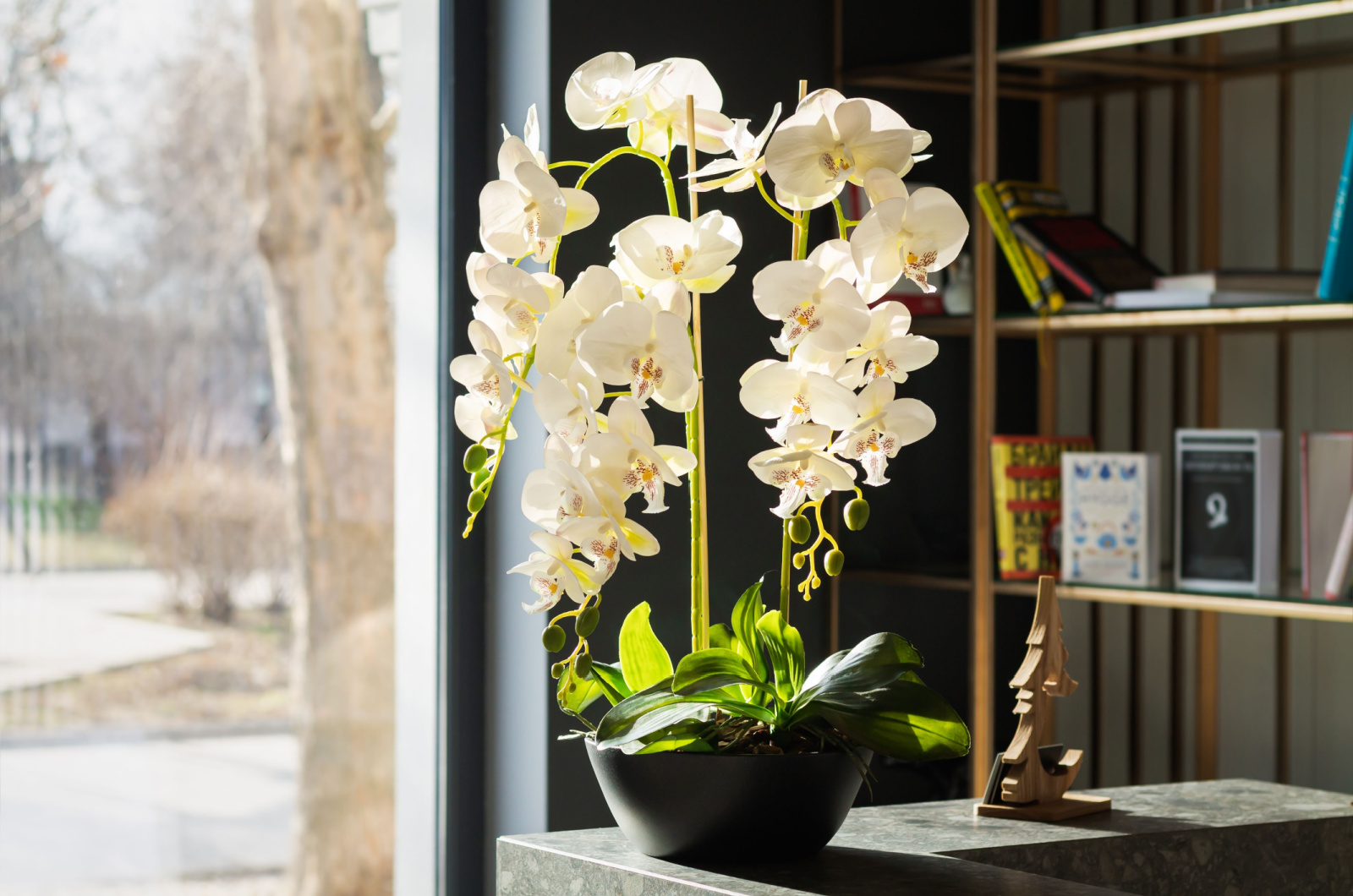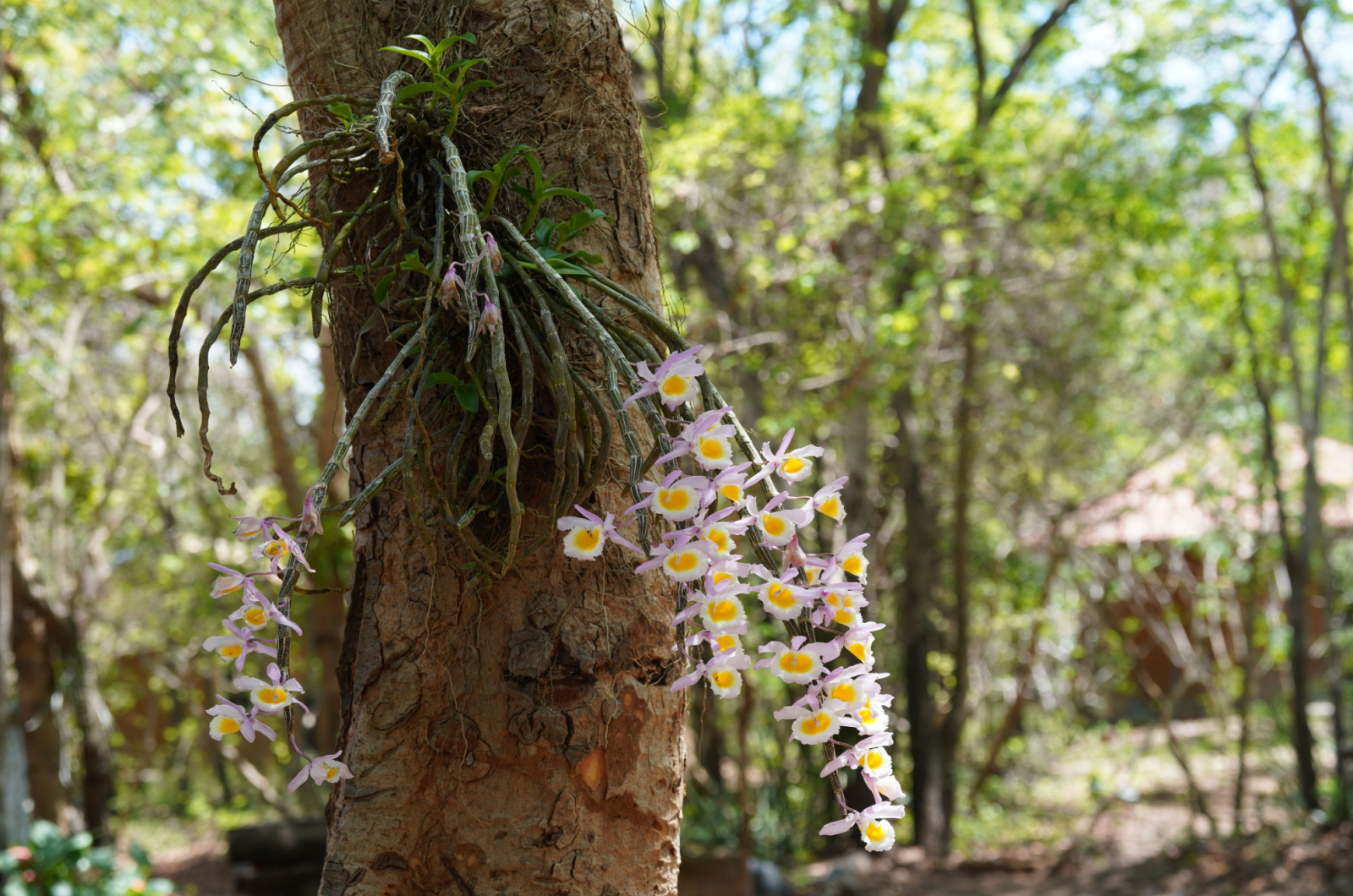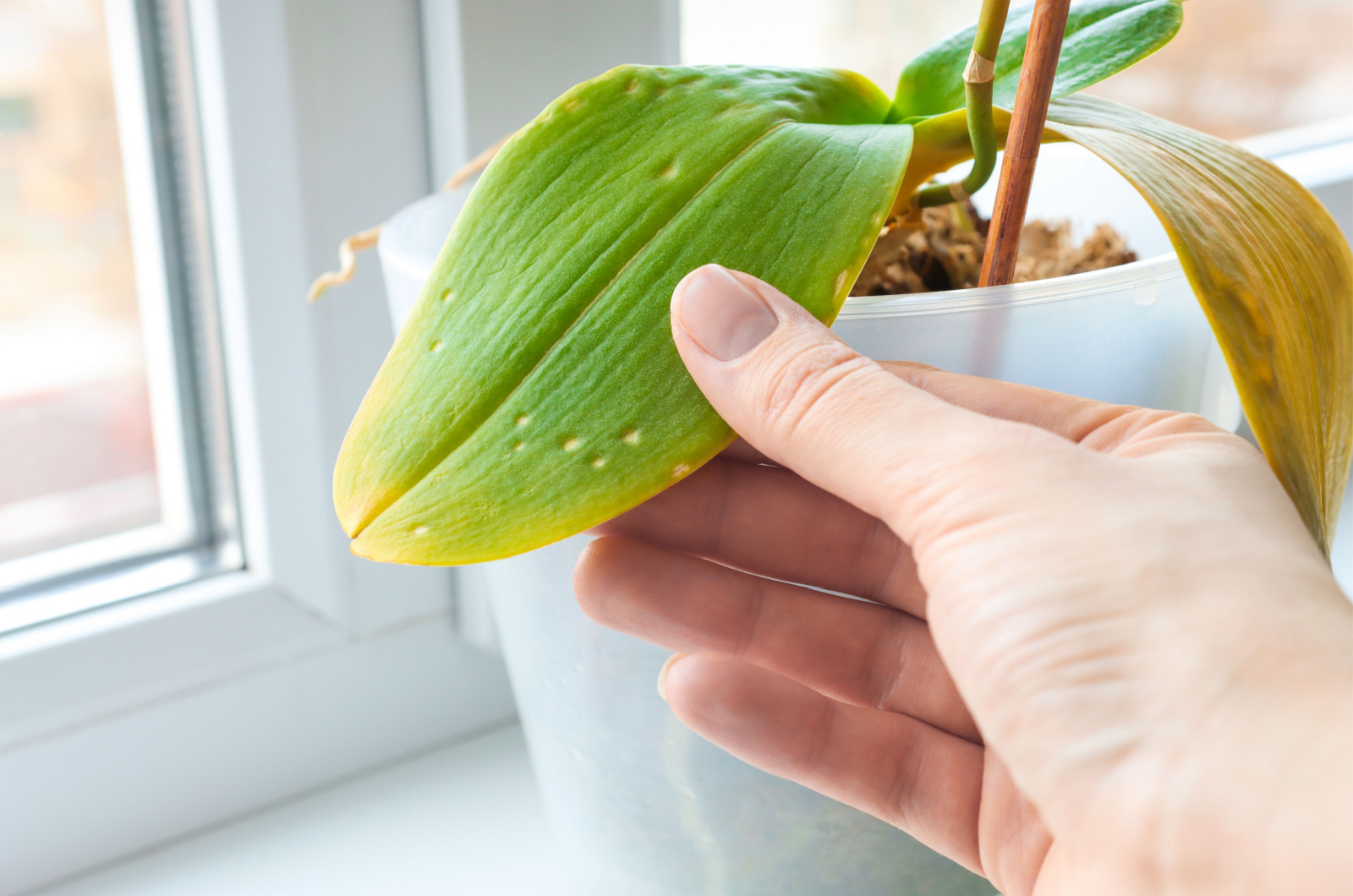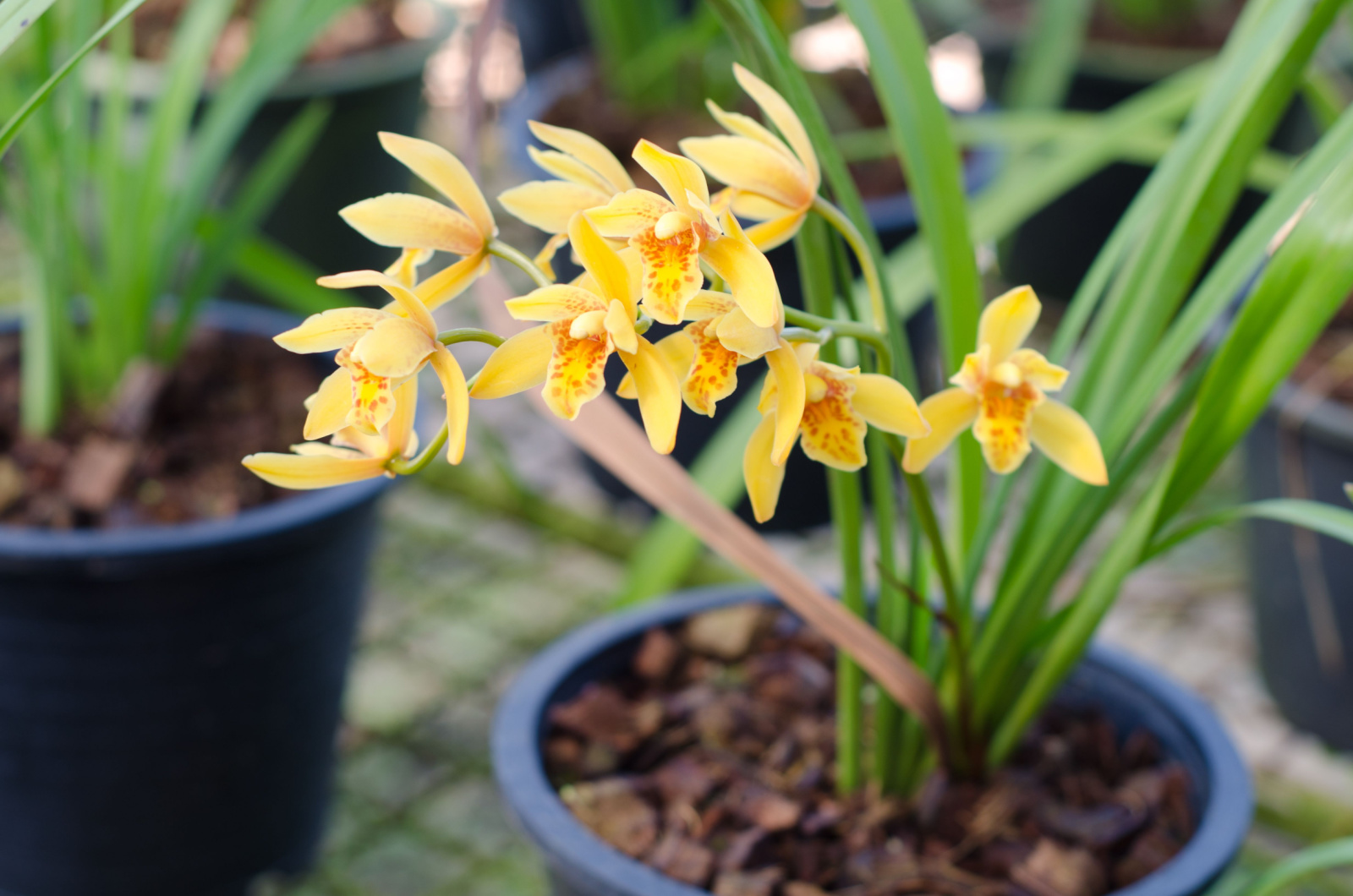Orchids have a special spot in the gardening world and even though they are sometimes referred to as drama queens, you can still find them in numerous households.
It’s because of their timeless beauty and delicate appearance that leaves everyone speechless. But you need to put a lot of effort into orchid maintenance if you want these plants to reach their full potential.
This refers to providing orchids with conditions similar to those found in their natural environment. One of the trickiest parts of orchid care is ensuring enough light.
So, are these orchids sun-worshippers or perhaps shade-dwellers? In this article, I’ll show you how much light do orchids need and some tips on how to ensure it.
Let’s get started!
The Ideal Amount Of Light For Orchids
There isn’t a precise answer to this question but a general rule is to ensure 6 hours of light for your orchids per day.
How’s that not precise? Well, there are some factors to consider, such as the type of orchid. Some orchids will need more sun exposure than others and you should also think about the light level.
If we take a look at the natural environment of these species, we can see that they’re native to tropical places and they typically grow under the canopy of taller plant species.
Some species receive full sun for part of the day, so it’s essential to know which type of orchid plant you have.
Let’s now see the three most common orchid types and their light needs.
Light For Terrestrial Orchids
The first orchids we’re gonna discuss regarding light requirements are ground or terrestrial orchids. These plants grow in prairies, bogs, and woodlands, and some varieties even grow in deserts.
They are the most sun-tolerant types and they’re perfect for outdoor cultivation, but you also need to provide them with some shade.
The varieties that are native to deserts and prairies, such as Lady’s Tresses, can withstand up to 8 hours of direct sun daily.
Those who grow varieties native to swampy and shady Florida regions should know that these species prefer filtered light. One of the examples of such varieties is the popular Butterfly orchid.
When purchasing a new orchid plant, make sure to check the species and its natural habitat. Mimicking light conditions from the natural environment will give you happy and healthy orchids.
Light For Epiphytic Orchids
The second group of orchids is epiphytic, and these species are tree-dwellers, i.e., they grow attached to tall trees and take nutrients and water from the surrounding environment.
When compared to orchids native to prairies and deserts, epiphytic species have a lower tolerance to light.
Epiphytic orchids benefit most from 6 to 8 hours of bright but indirect light per day.
You should keep these orchids away from the shady parts of your outdoor garden. The best option is to keep them in hanging baskets or mount them.
Lithophytic Orchids
The third group of orchids thrives in rocky regions. They generate aerial roots they use to climb in rocky environments.
Some of the most famous orchid species, Moth and Dendrobium, flourish in these conditions.
You should know that these rocky surroundings aren’t always exposed to full sun. Some lithophytic species, such as Vanda hybrids, prefer shady spots and will only need a little indirect light to develop healthily.
On the other hand, species such as the rat tail orchid prefer sunnier spots.
Signs Of Light Stress
We’ve seen some general light requirements of orchid plants. It’s important to learn how to recognize if your orchid is receiving too much or too little light.
If your plant receives too much bright light, it may display yellowing. If the problem isn’t treated, the leaves will turn crispy and dry out.
Your orchid leaves may also droop if the light level is too high.
Lack of light in orchids causes the plants to etiolate, i.e., extend to reach the light source. Additionally, insufficient light can lead to a non-blooming orchid, and that’s the last thing we want.
Let’s see some tips on ensuring the perfect amount of light for orchids!
How To Ensure Enough Light For Your Orchids
Once you get a new orchid, the good news is that you can experiment with light for a while. You can give the plant slightly more or less light until you figure out which level suits best.
Here are some guidelines.
Keep Outdoor Orchids In Pots
If you want to add terrestrial orchid species to your garden, you should know that they prefer compact growing substrate that retains more heat.
This means it tolerates slight changes in light and temperature, which is excellent news for beginner growers.
But don’t plant your terrestrial orchids in the ground as soon as you buy them. I highly recommend planting it in a container so that you can move it around your garden until you see which spot they like the most.
If your orchid can’t adapt to your outdoor conditions, you can move it indoors.
You can use the same approach if you decide to grow mounted orchids.
Choose The Perfect Indoor Location
If you want to keep your orchids indoors, you need to find a spot that receives bright indirect light. Spots near windows typically work best but you need to be careful about window exposure.
For instance, windows with western or eastern exposure have enough light for orchids and it isn’t direct during the hottest parts of the day.
South-facing windows may not be the best option for your orchids because they receive too much full sun, which can cause the leaves and stems of your orchid to turn yellow. You can move your orchid a few feet away from the window to protect it.
I don’t recommend north-facing windows for your orchids because light levels there are too low and the plant will be in unnecessary danger.
Use Artificial Lights
Some growers can’t provide their orchids with sufficient lighting either indoors or in a greenhouse. Luckily, there’s still a way to ensure enough light!
Artificial lighting, such as cool white tube lights, will work perfectly for orchids.
If you struggle with finding natural light for your orchids, consider investing in fluorescent bulbs. And please remember that the lights we use for vegetable sprouting aren’t suitable for orchids!
The Bottom Line
Orchids may have a bad reputation when it comes to maintenance but things get easier when you know the type and origin of your variety.
Follow our guidelines when choosing the location for your orchid and experiment a little until you find out what your particular species prefers.

